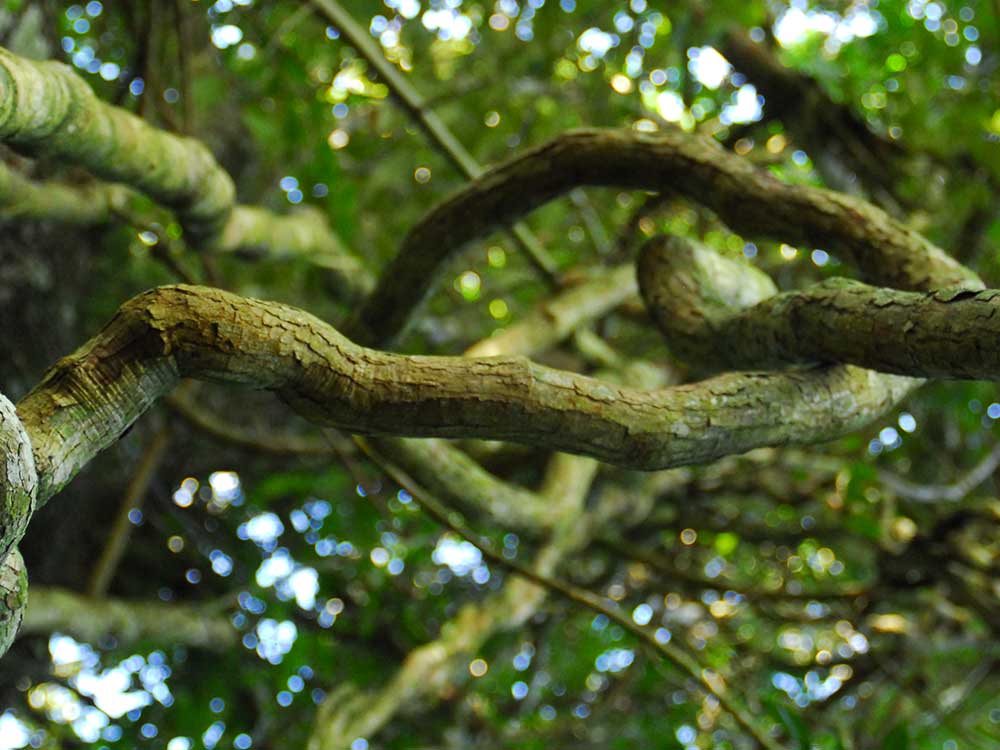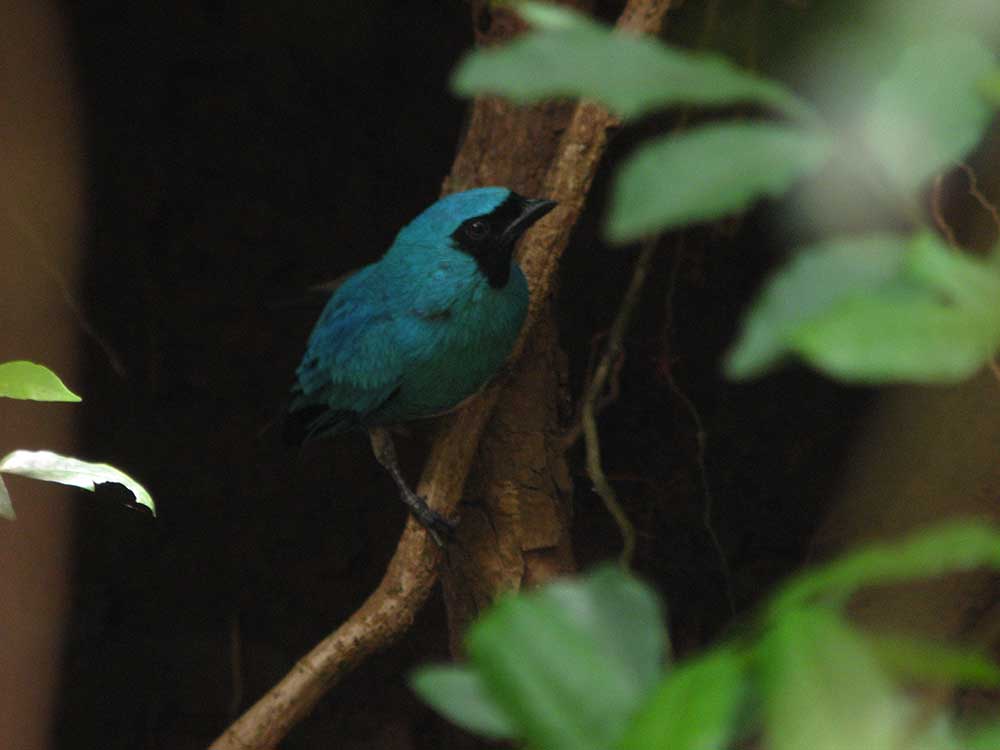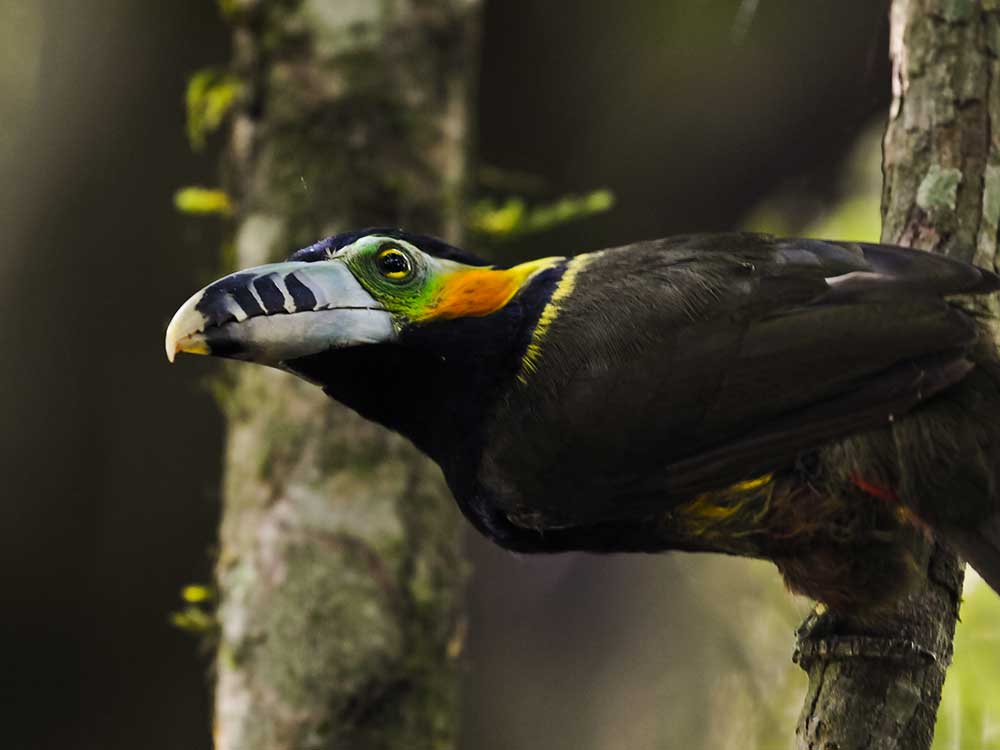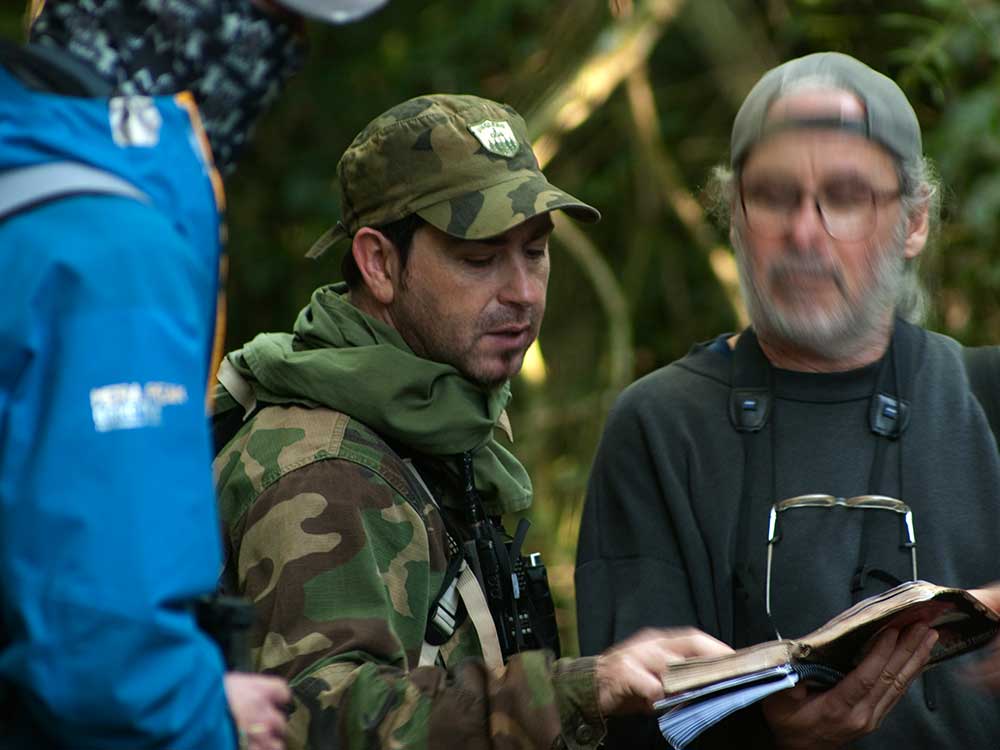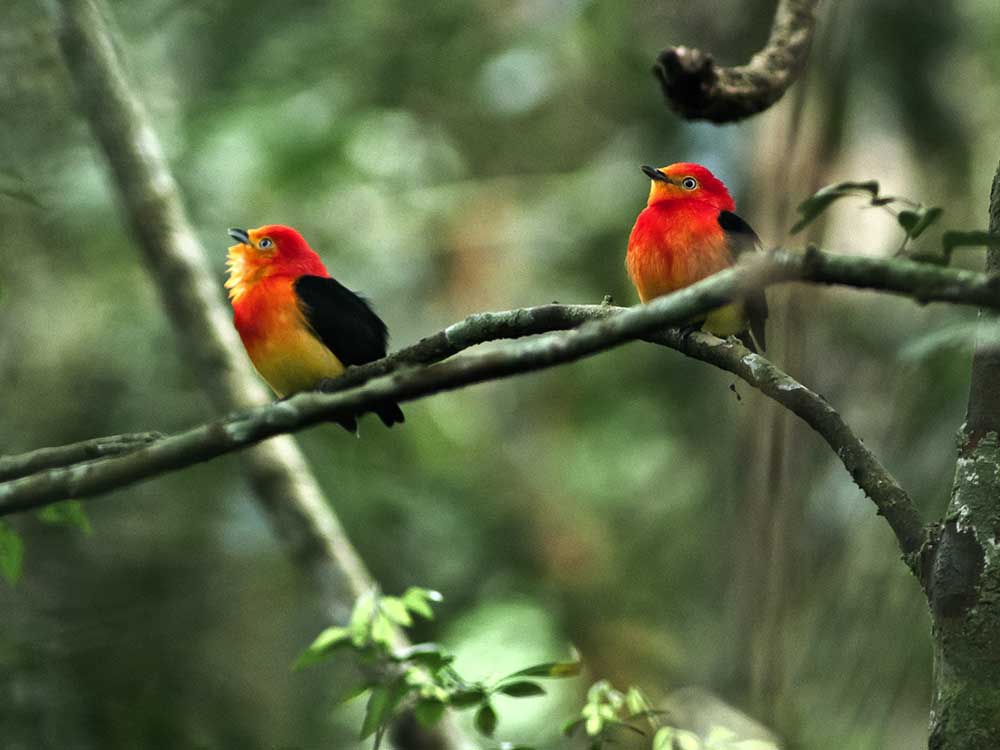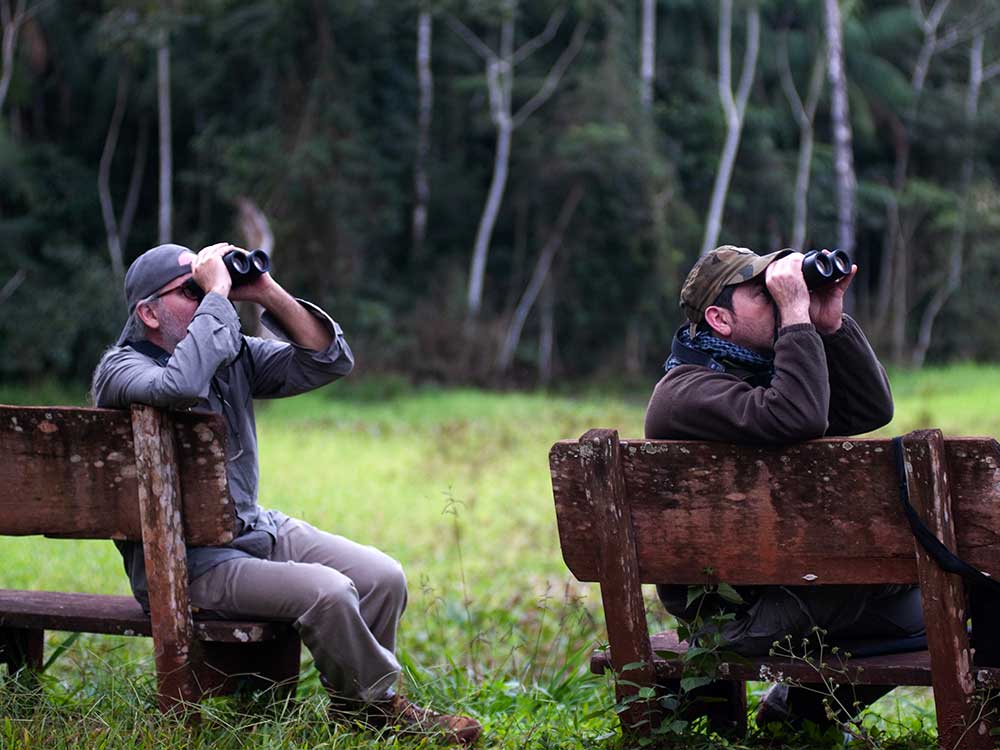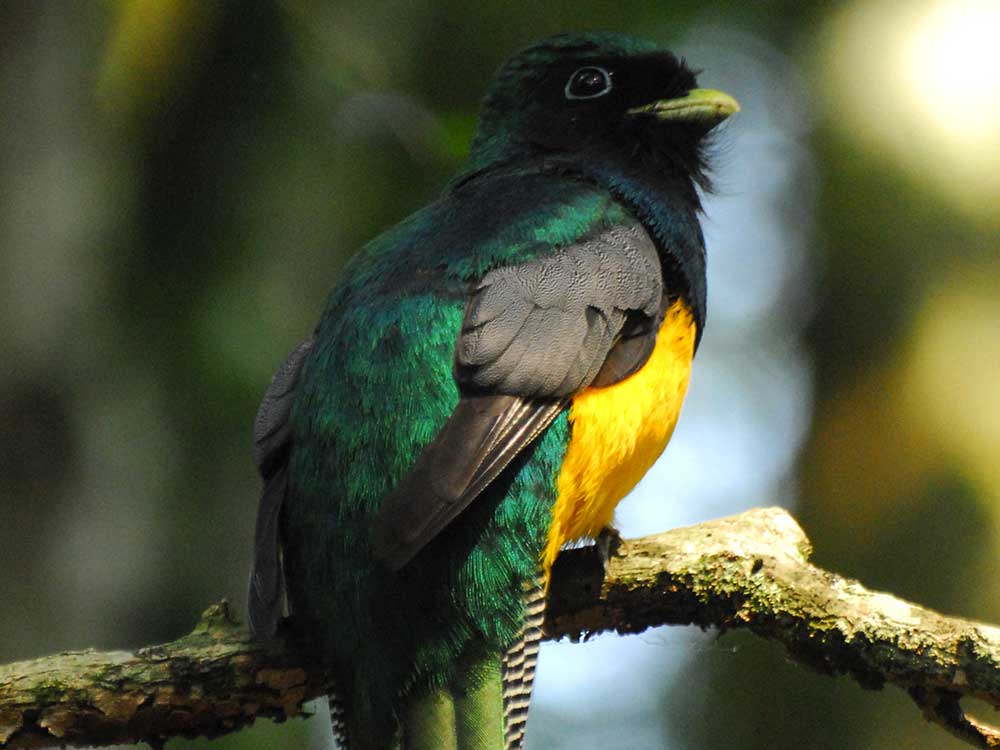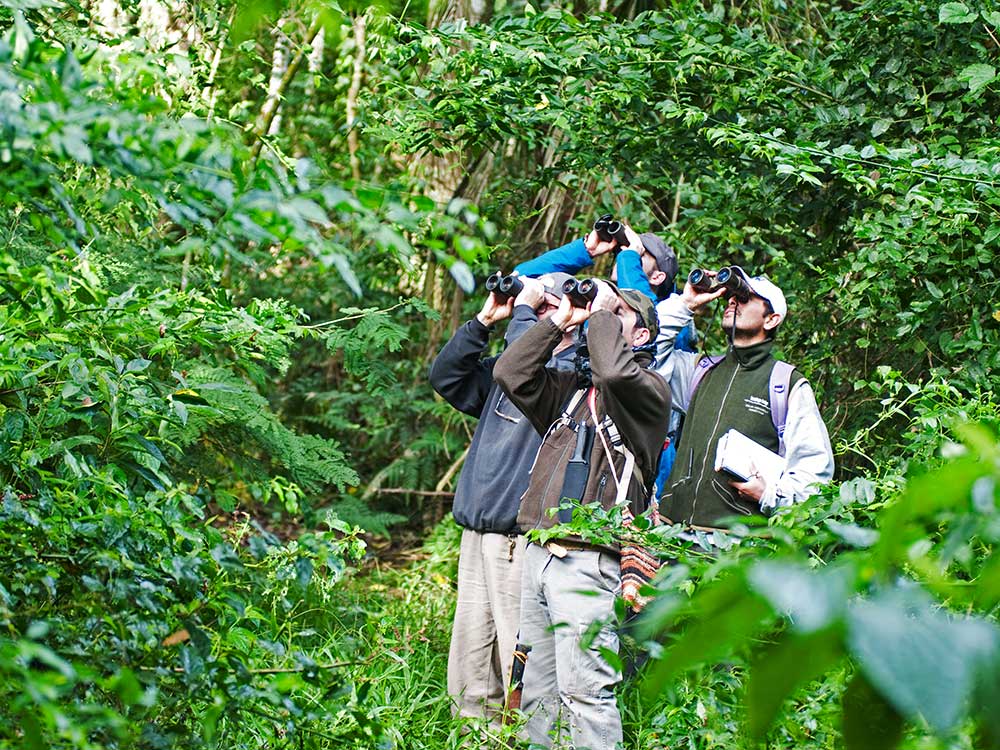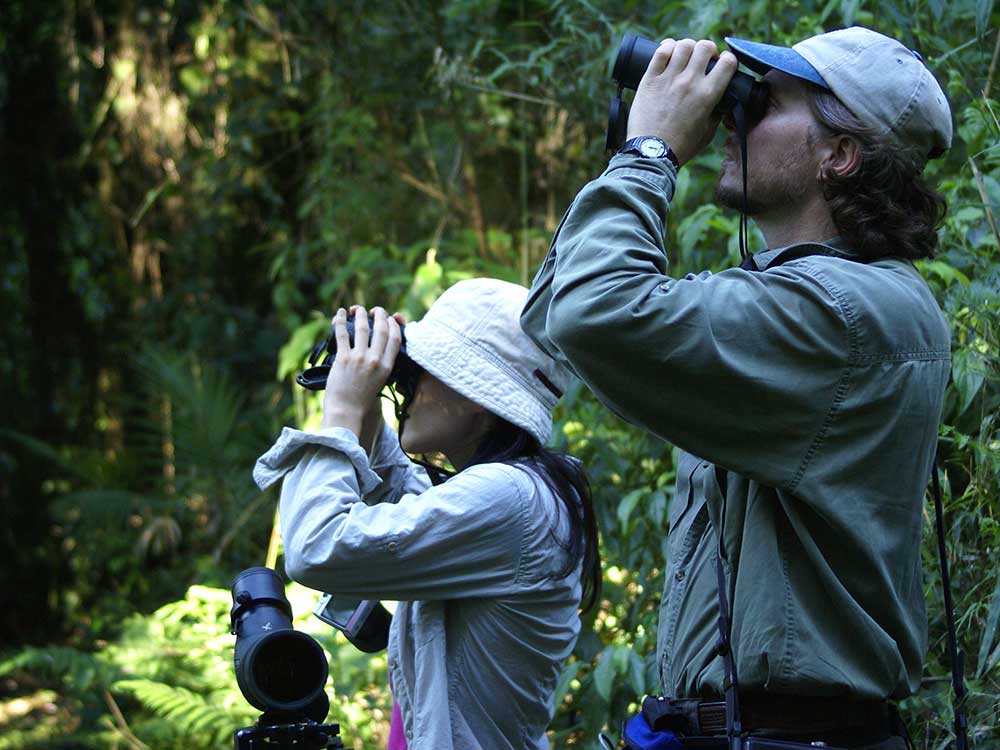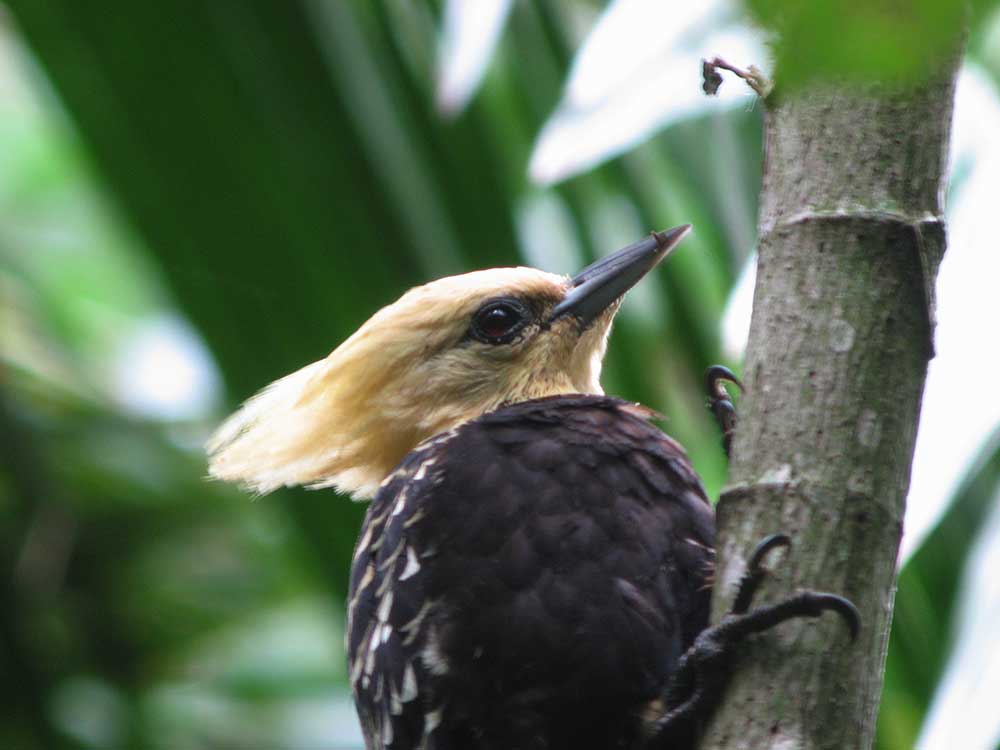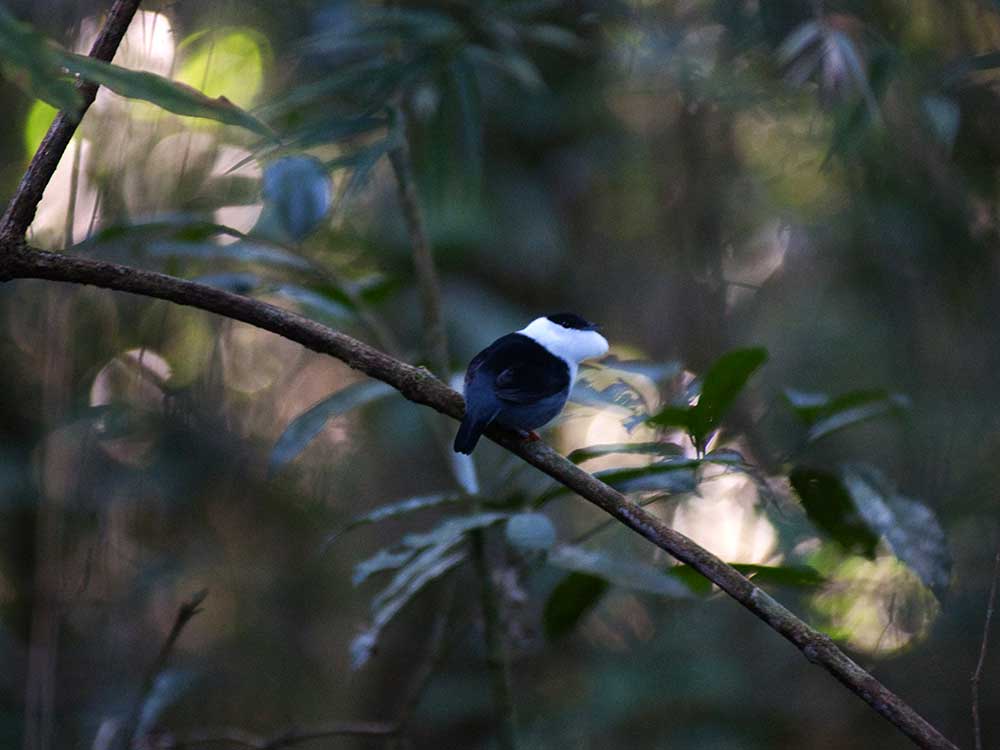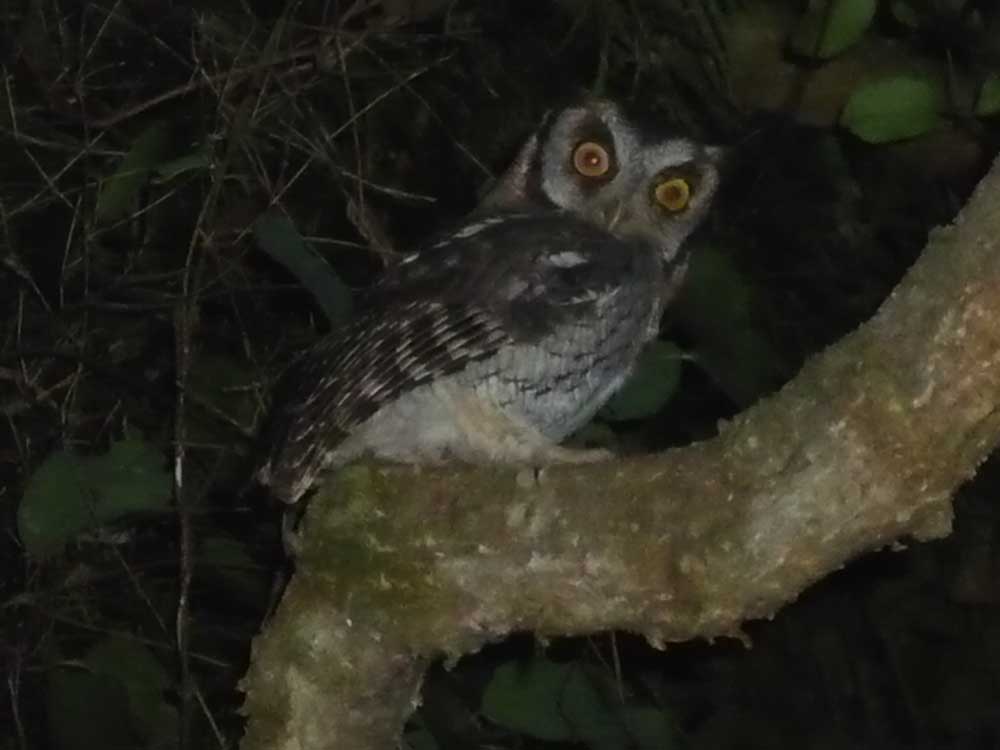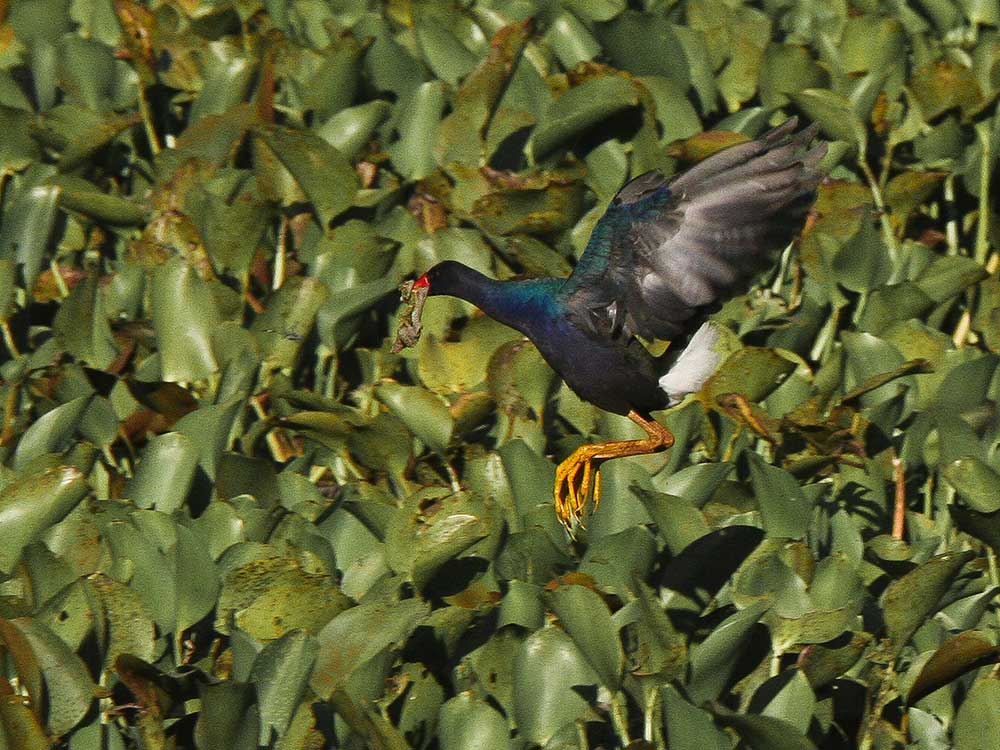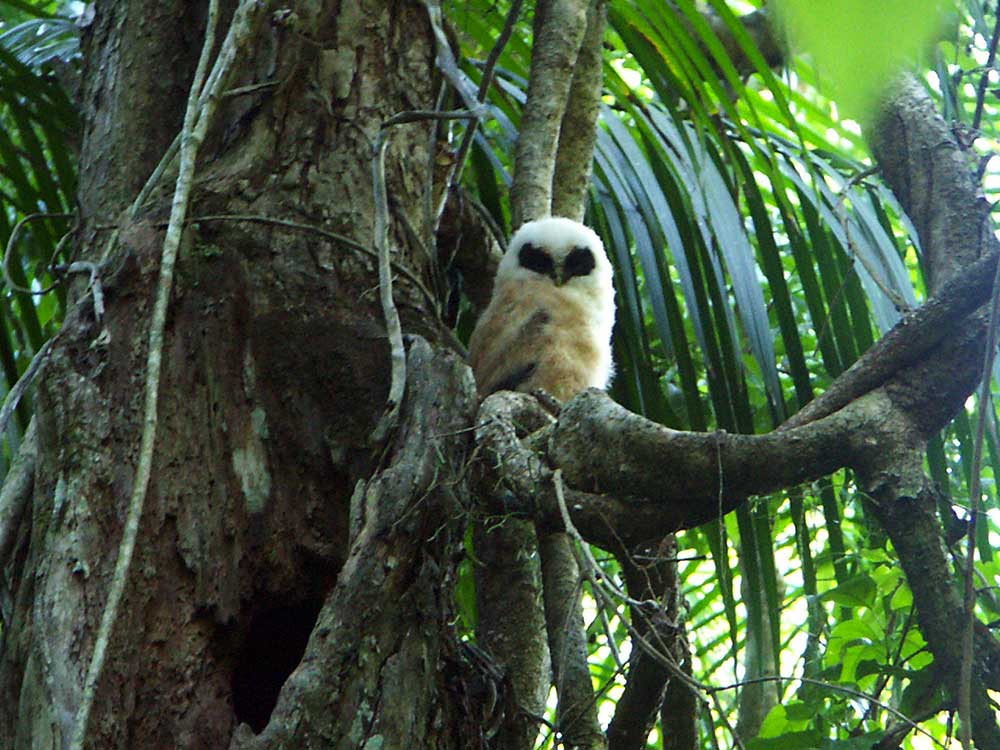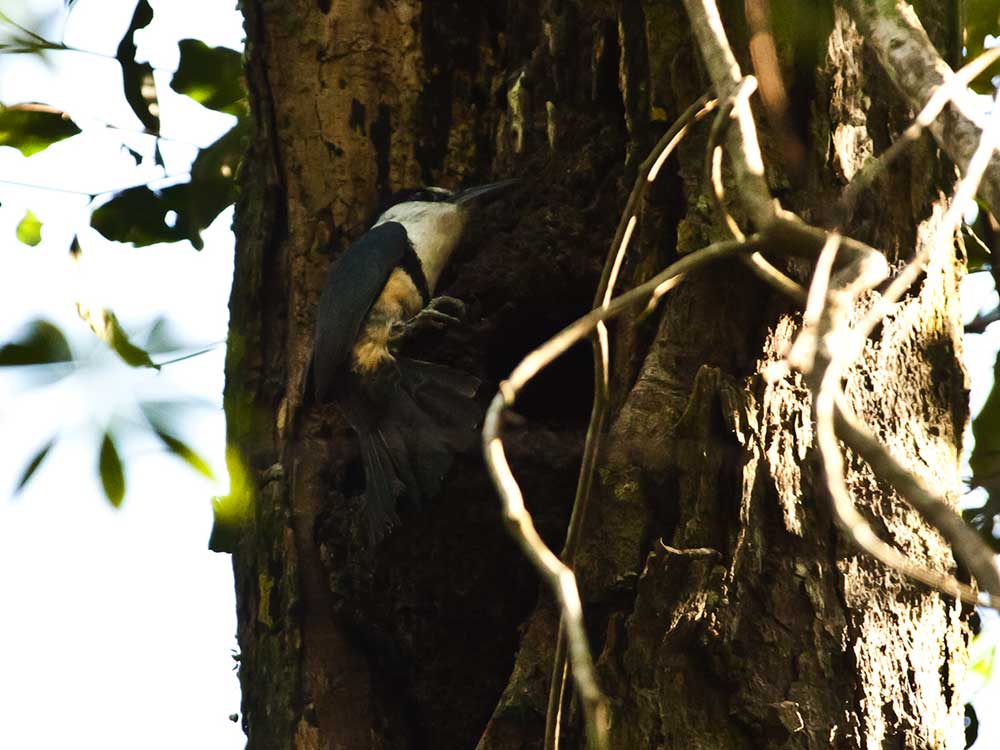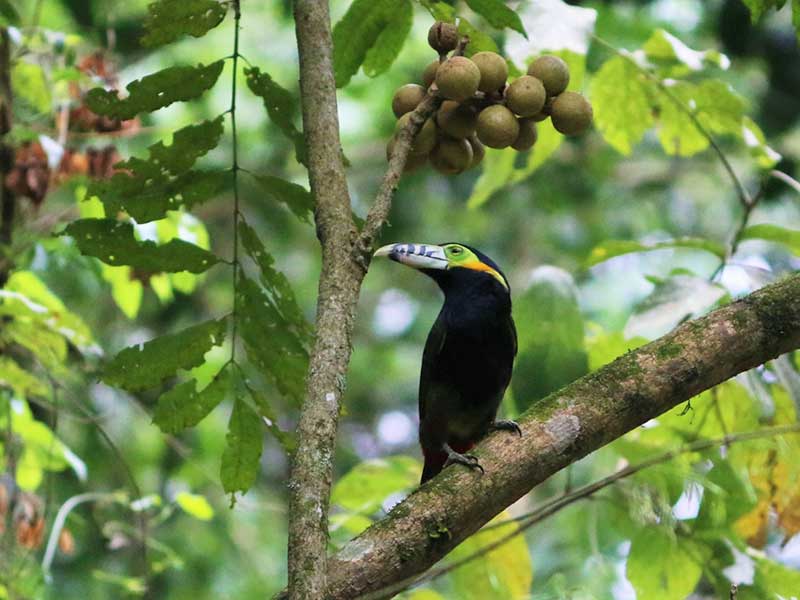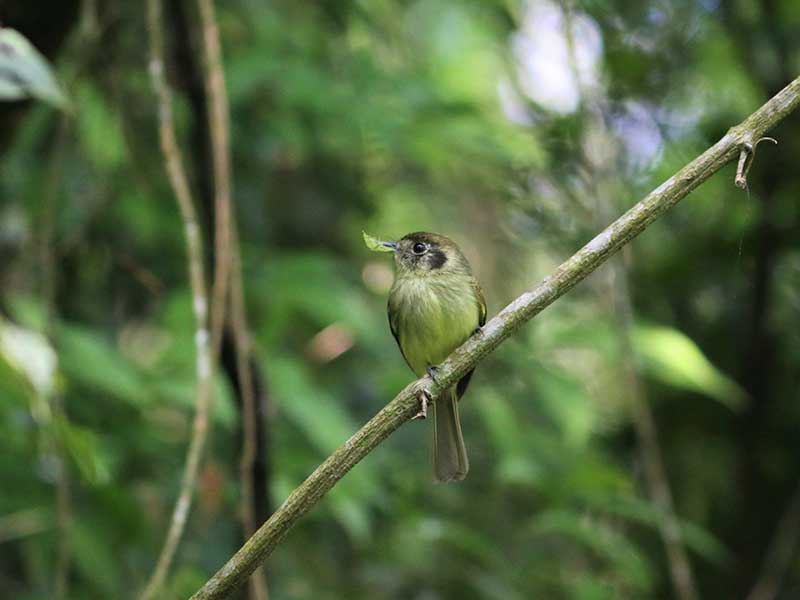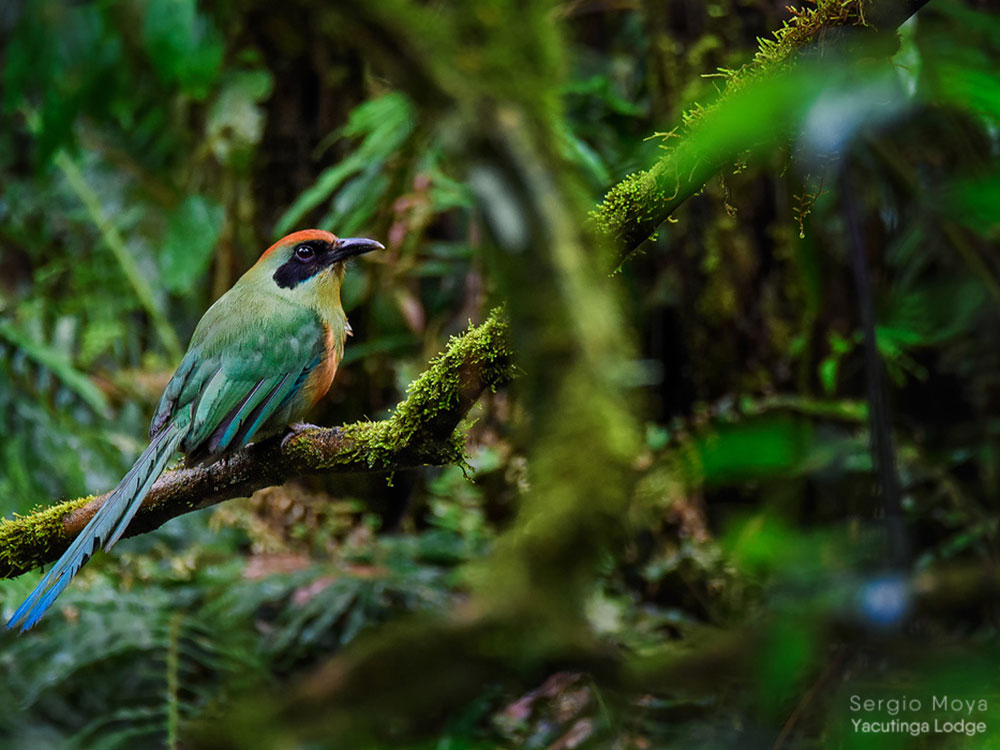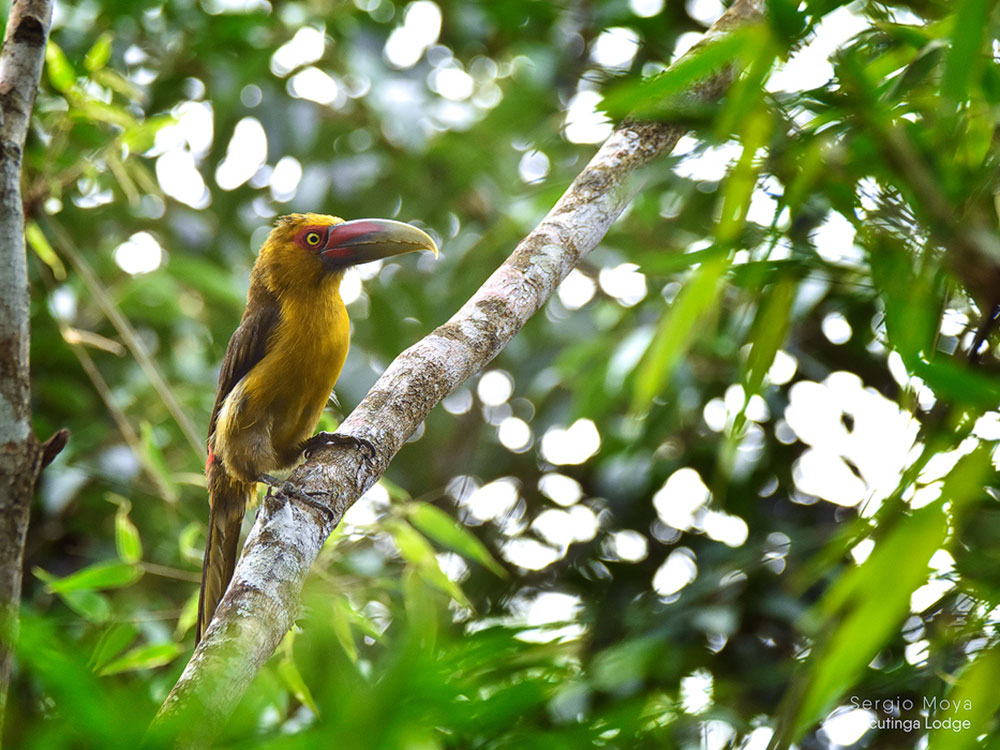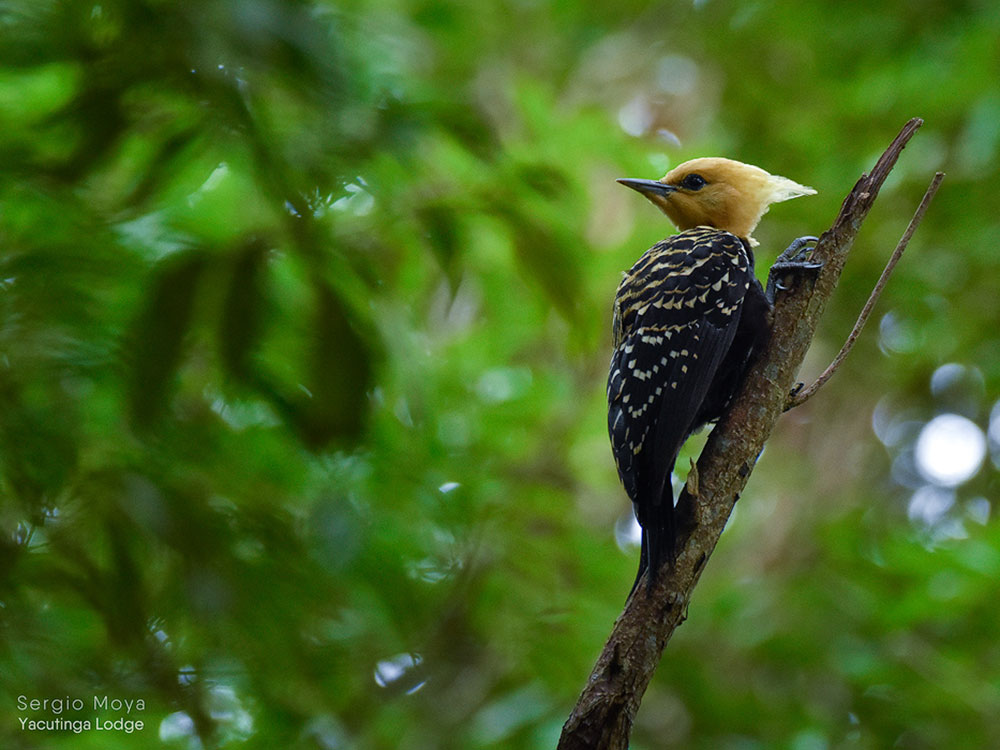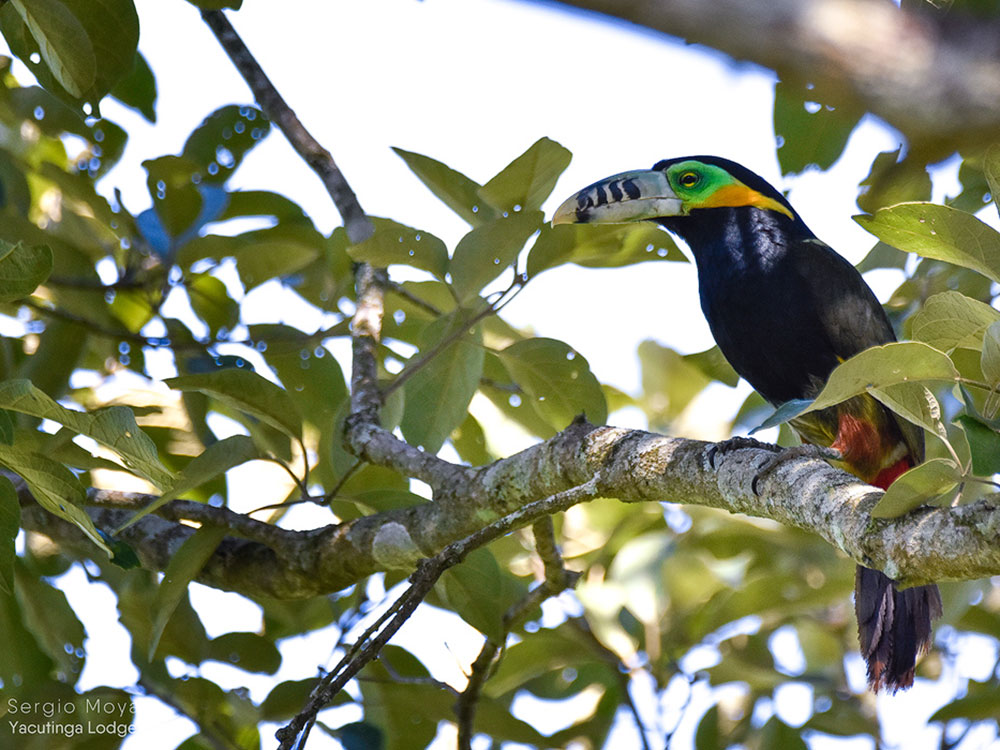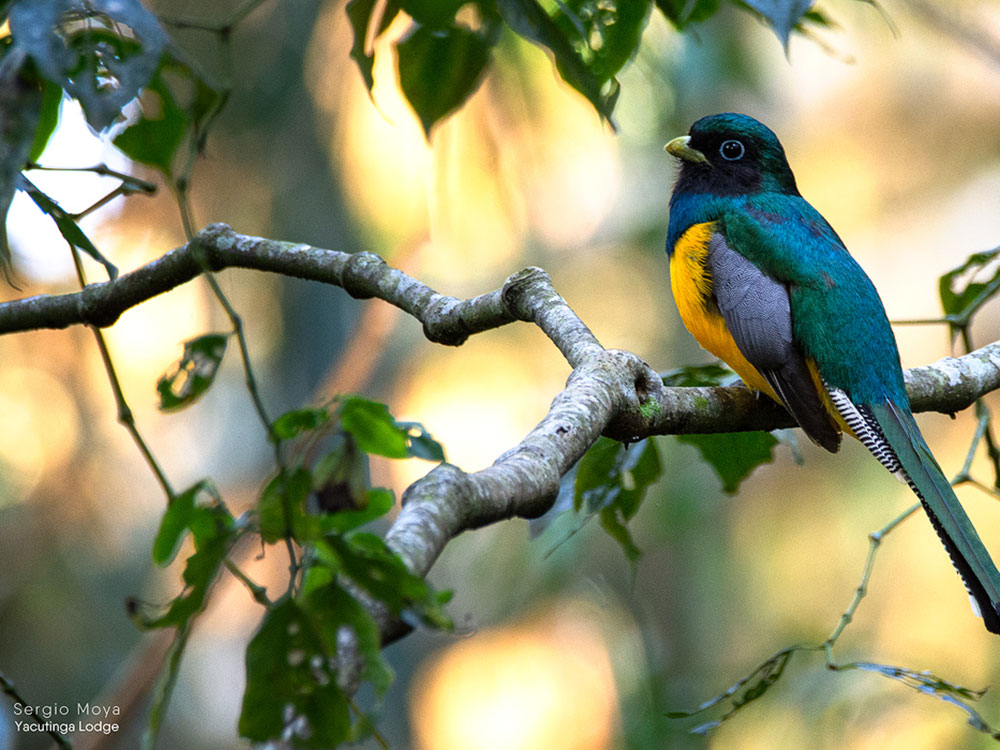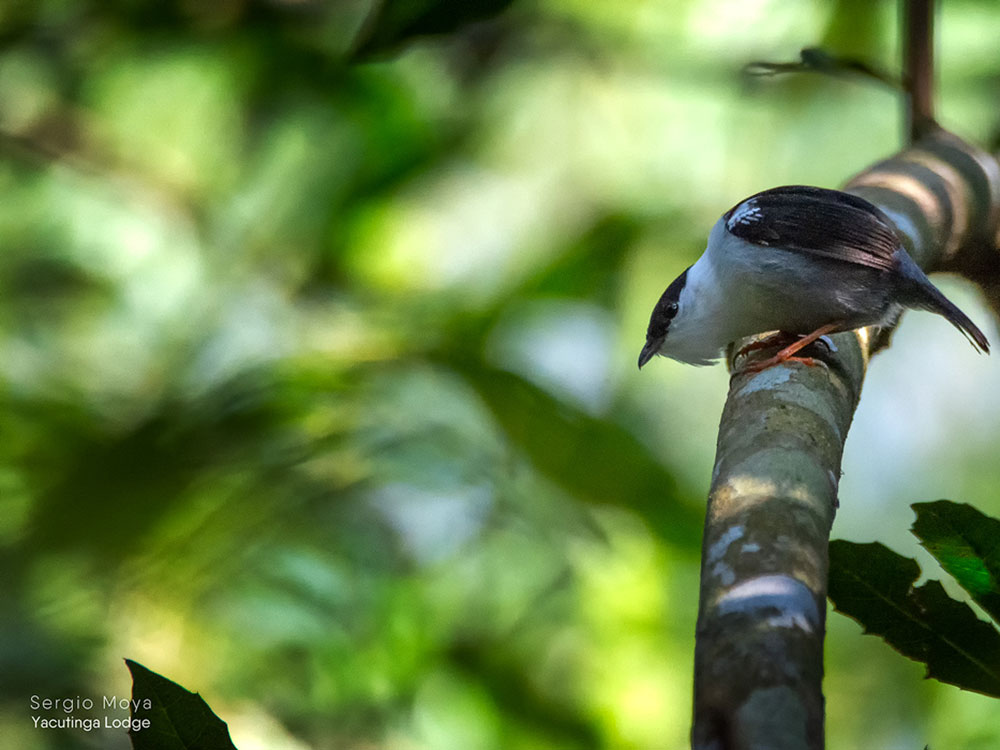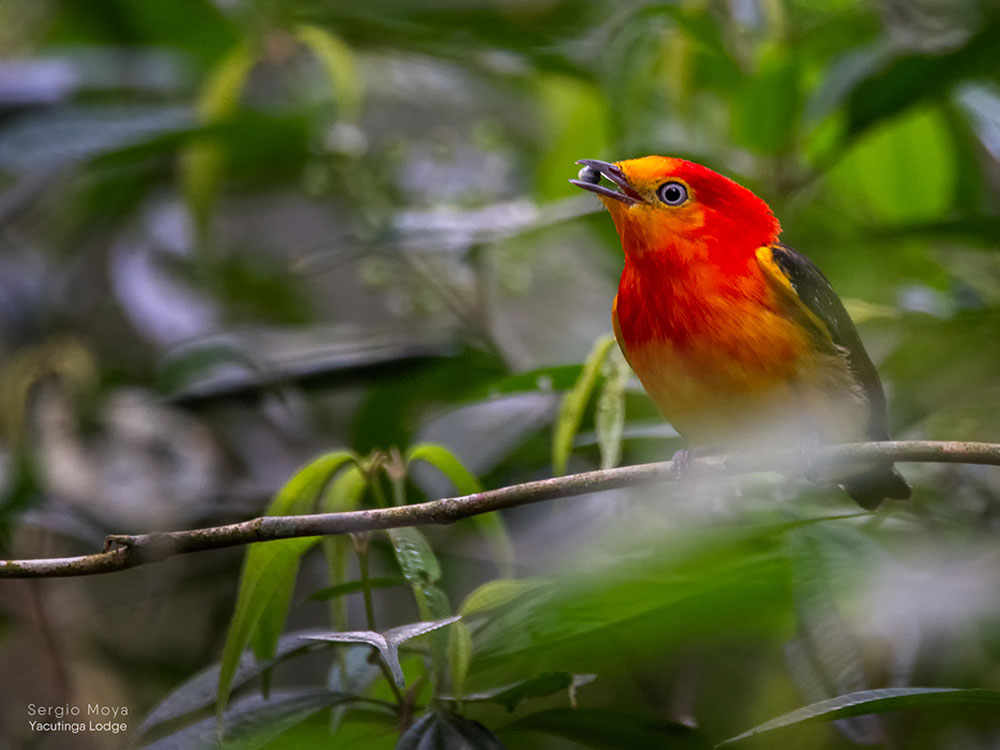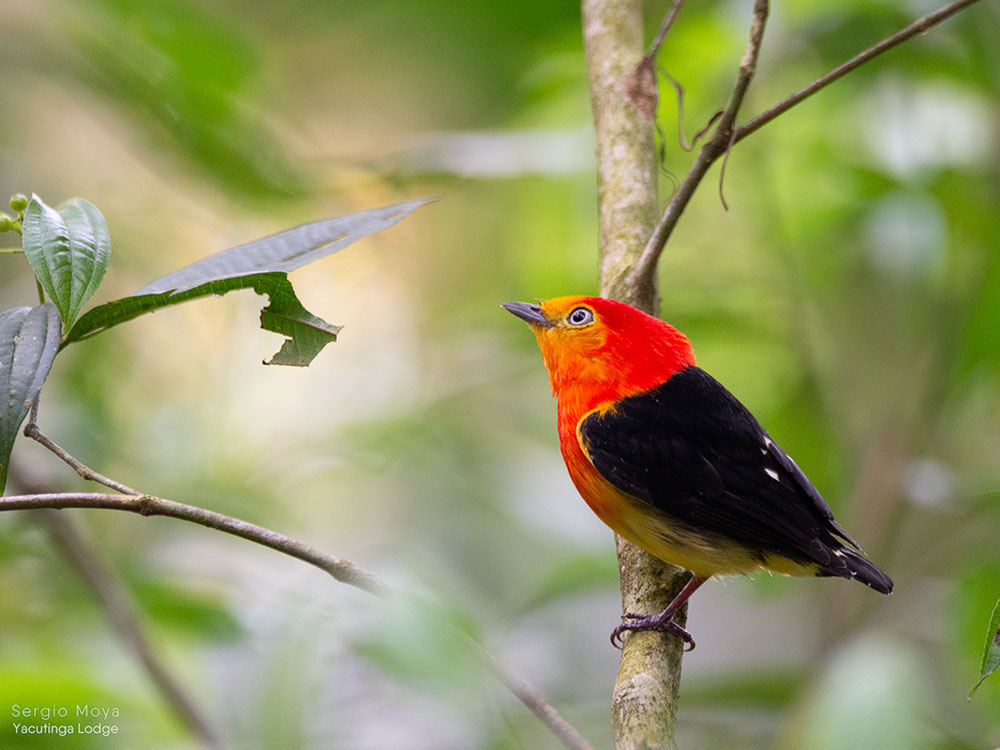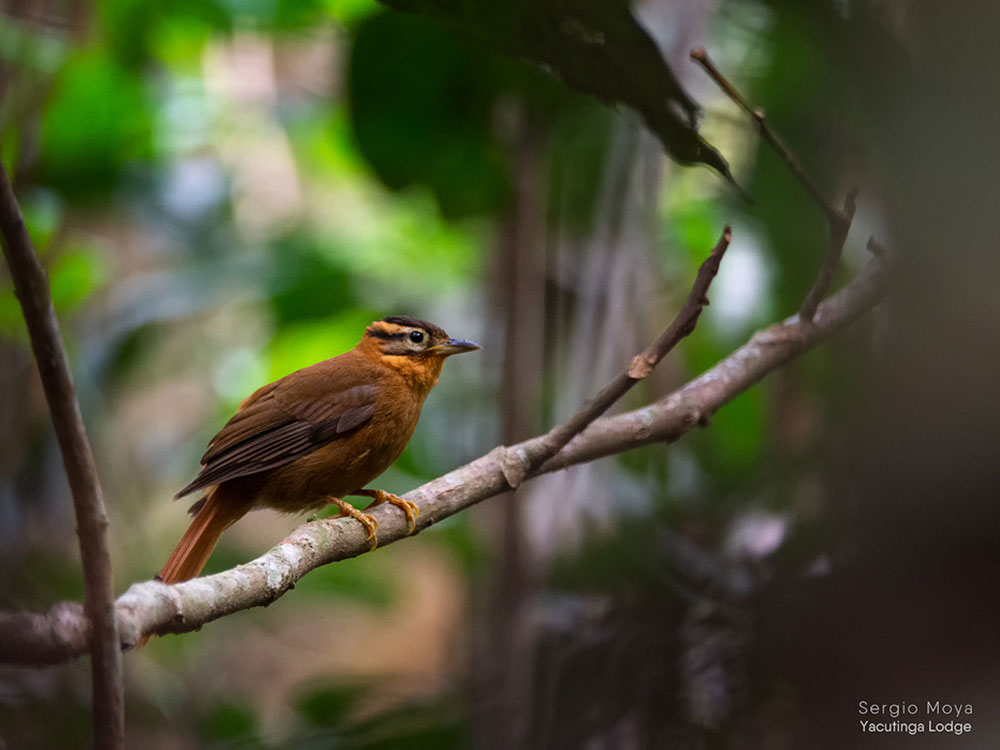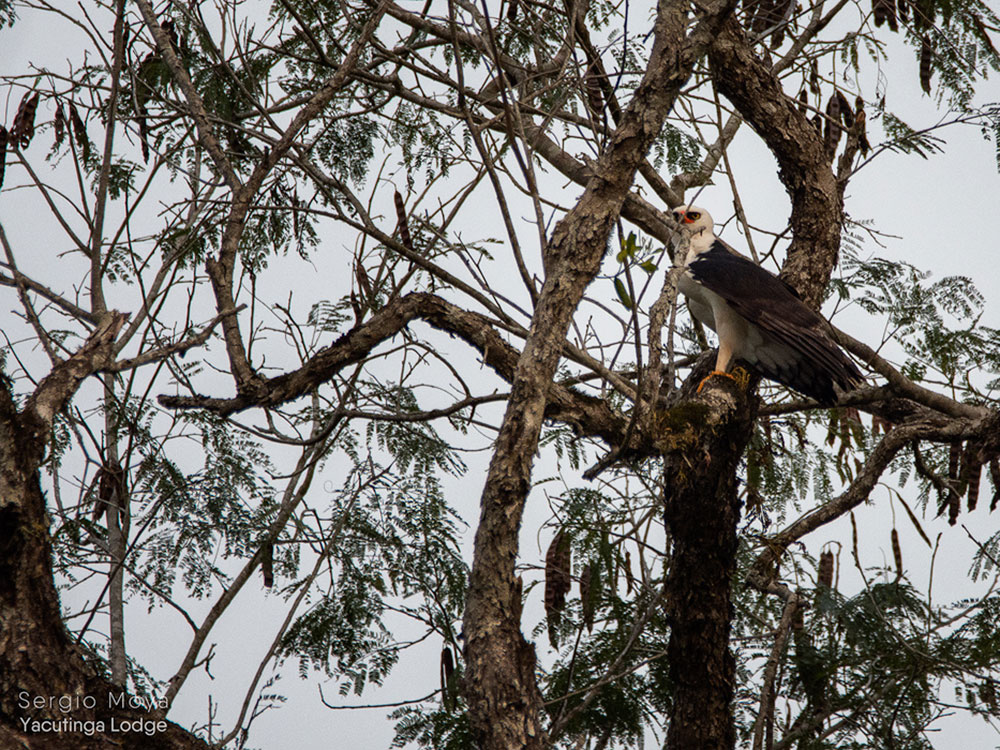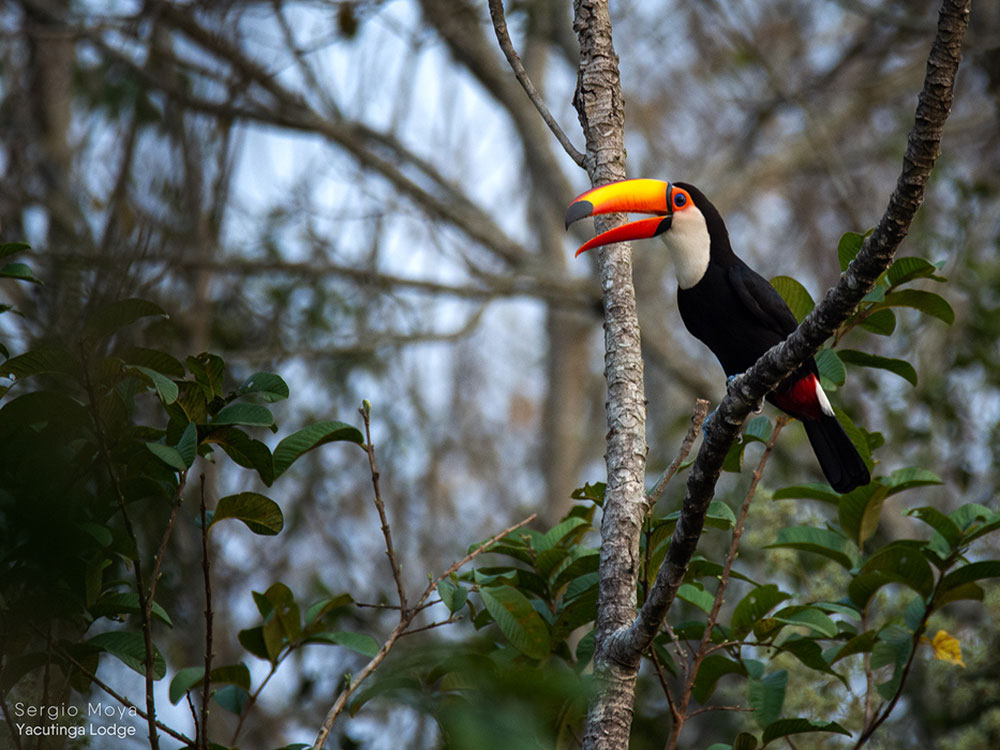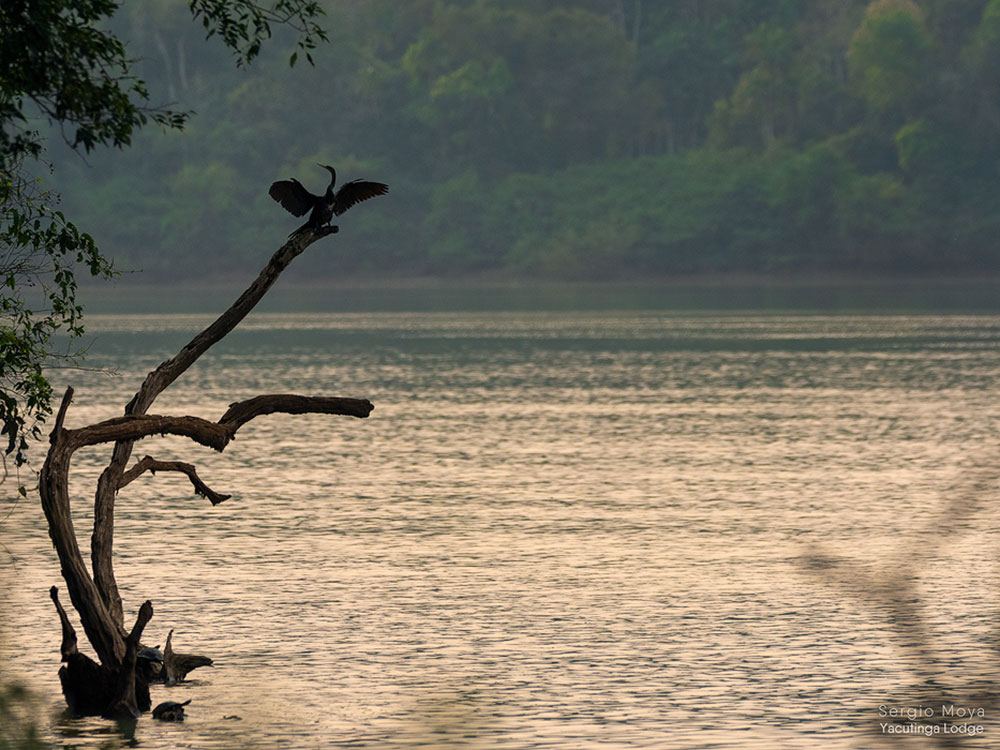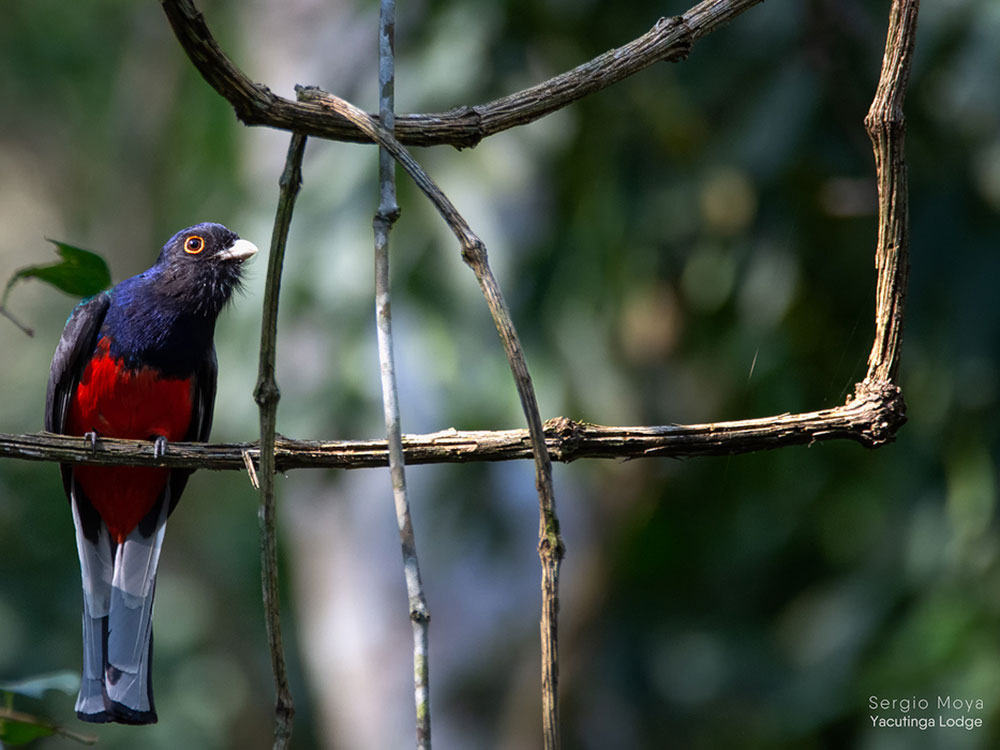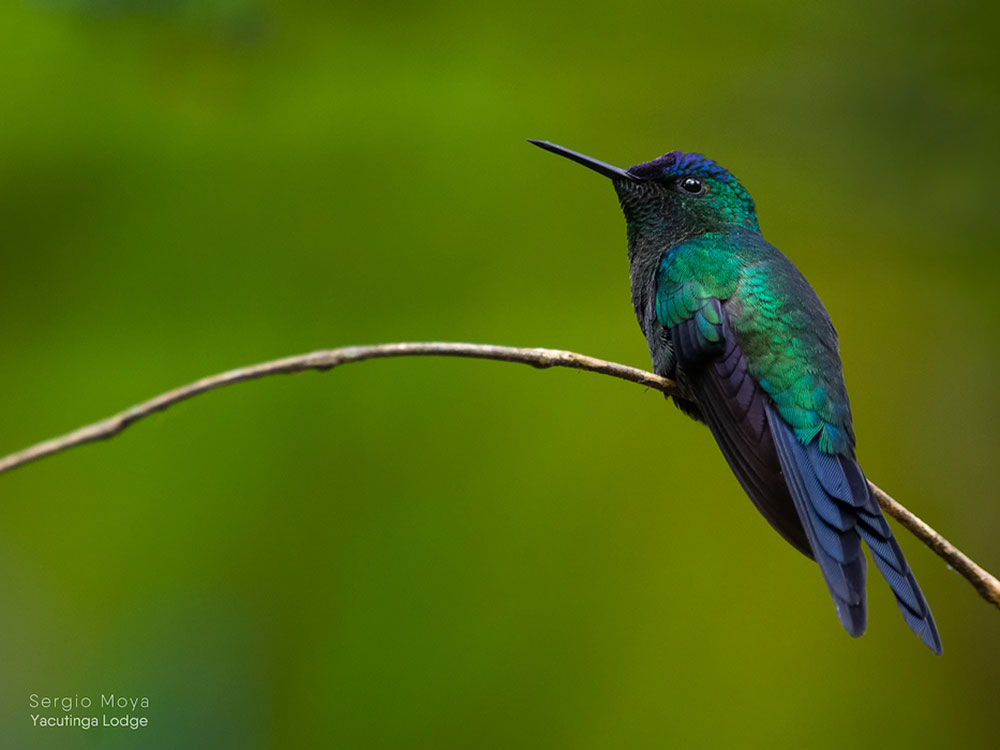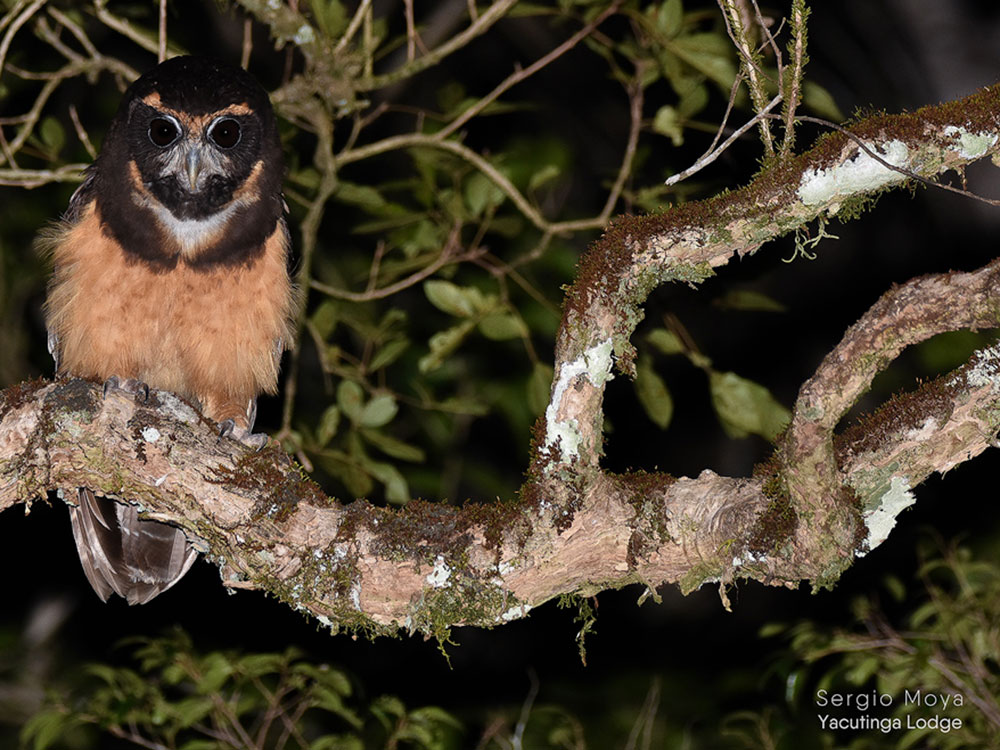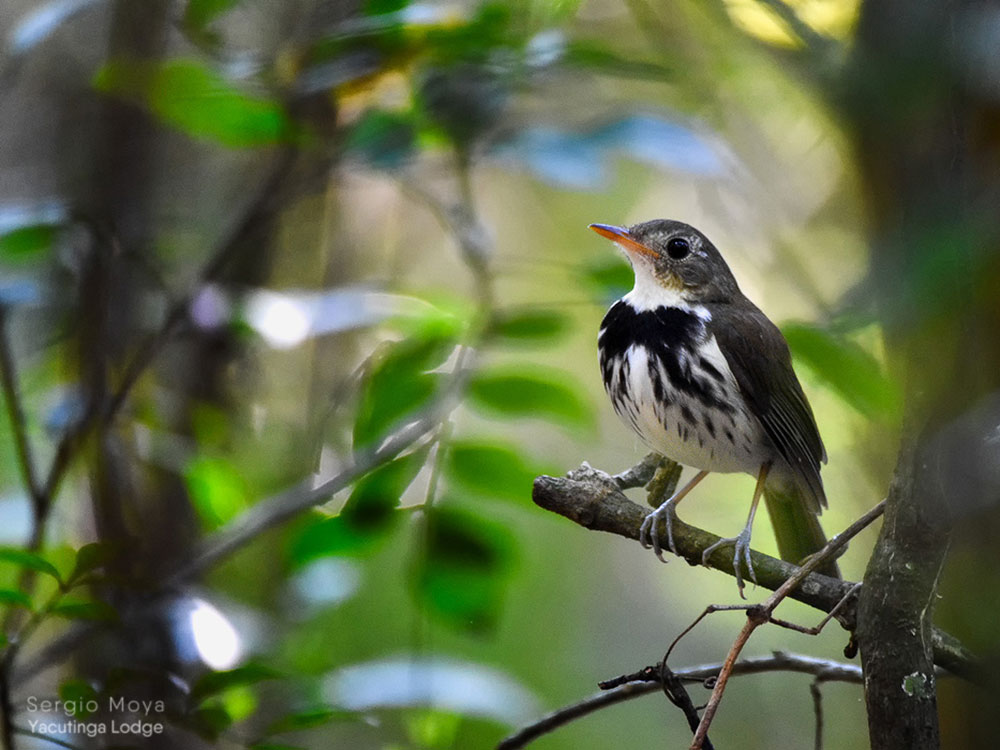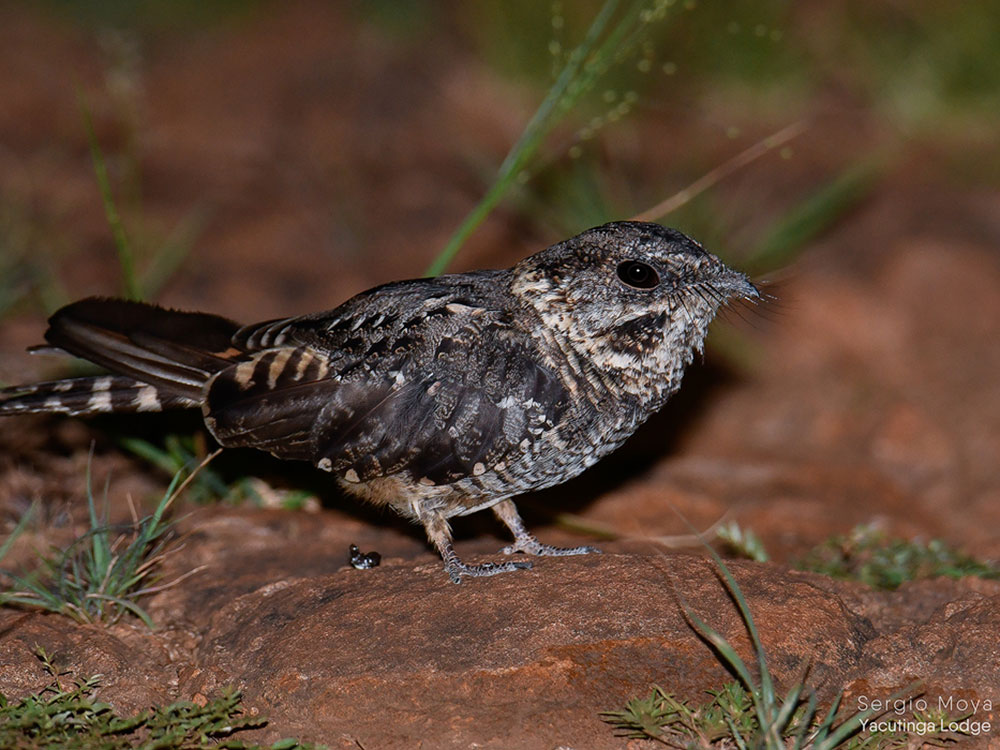Birds of the jungle | 5 days /4 nights

The Interior Atlantic Rainforest offers an important fowl diversity. The exiting bird-list reaching 300 bird species registered at the exclusive Yacutinga Private Nature Reserve and the comfort of Yacutinga Lodge guarantee a successful bird expedition. Here is our birding program guided by one of the most well known ornithologist of the Paranaense area.
The location of this protected area belongs to the phytogeographical area of the Parana Forest, which is the most biodiverse eco-region of Argentina. The main characteristics that generate this exuberant Nature are its warm climate, constant humidity, and the lack of dry seasons and of changing climate.
These environmental conditions make the area a sort of giant greenhouse. This is a completely green, stubborn and many times, impenetrable forest. The forest structure becomes apparent in its different plant strata, which provide more than 295 bird species listed in Yacutinga with shelter, food and reproduction sites.
The highest Forest stratum, which reaches 30 meters in height, includes adult trees that form an uninterrupted roof of ramifications and dense foliage. This is the stratum that filters and administers the right amount of sunlight to the lower strata.
The smallest trees, between 3 and 10 meters high, make up to the so-called intermediate stratum. This layer with its discontinuous canopy is a profusion of young trees that will renew the forest, several fruit trees, bamboos and curious arborescent ferns.
The lowest stratum, up to 3 meters from the ground, receives little sunlight. Broad-leafed grasses, a large number of smaller ferns, and non-woody plants like begonias are abundant. This vegetal group covers and dresses the forest ground.
Other characteristics of this jungle are the presence of two palm species, Pindó (Syagrus romanzoffiana) and the elegant Palmetto (Euterpe edulis), the latter being endangered; there are also a number of bamboos that proliferate between the low and the intermediate strata of the forest. Tacuara Guazú (Guadua angustifolia), with its 30 meters in height, is outstanding.
It is important for the birdwatcher to know the tree species of the forest that he is visiting, since most bird species find shelter, to nest in certain trees; frugivorous species, for example, concentrate at a certain time and on certain trees in a daily search for food, mainly wild fruits.
Knowing the ecology of forest trees and how to identify them is an essential tool for all bird watchers.
Bird abundance in this natural district is relevant.
Some interesting birds of the area are: Solitary Tinamou, Small-billed Tinamou, Boat-billed Heron, Green Ibis, Muscovy duck, the King Volture, some of the most powerful Accipitridae of the world as Black and White Hawk Eagle, Swallow-tailed Kite & Plumbeous Kite (during the South American summer), Great Black Eagle and the infrequent Ornate Hawk Eagle can be seen. Walking in silence there are good chances to sight the Tiny Hawk has hidden among the trees. This is one of the most rare and small Raptors of the world. Falcons are represented in large numbers being the very easy to observe Southern Crested Caracara, the two Forest Falcons and the Aplomado Falcon.
Related with Guans, the Black- Fronted Piping-Guan (locally called Yacutinga in native Guarani language) is very rare in the area being most common the Rusty-margined Guan.
Sometimes can be found a family of Spot-winged Quails searching for food on the ground of this Jungle. The Slaty-breasted Wood-rail shows up at the border of the jungle roads. The blackish Rail is often seen close marshes area as it is commonly the Purple Gallinule.
Several Doves are easy to observe during the birding hikes being the Violaceous Quail-dove and the Plain-breasted Ground- Dove the more elusive ones
Parrots are well represented by White-eyed Parakeet, the incredible small Blue-winged Parrotlet and the beautiful Scaly-headed Parrot usually found in couples. There are some strange Cuckoos as the Pheasant and the Pavonine Cuckoo being the funny Squirrel Cuckoo very common in the area.
The Northeast of Argentina has more than 17 different species of Hummingbirds being the Iguazu Jungle home of plenty of these. The Black Jackobin, the Violet-crowned Plovercrest and the Black-breasted Plovercrest are present at Yacutinga´s Reserve being very hard to identify them in the wild.
The list continues with the two eastern Argentine Trogons. Ringed, Amazon & Green Kingfishers are easy to watch by the jungle waters as it is the crepuscular Rufous- capped Motmot very common at the gardens of Yacutinga Lodge. The five argentine Toucans are present in this beautiful Private Reserve being the Saffron Toucanet the most rare and the Spot-Billed quite common in this specific place.
The Buff-bellied Puffbird can be found close to termite nests in the wild. An important number of Argentinian Woodpeckers, Piculets and Woodcreepers usually can easily hear by knocking in different type of woods being very interesting to listen to them carefully while trying identification.
Antshrikes can be seen in the dense forest being the Spot Backed surprisingly common in Yacutinga´s Reserve. During the South American winter Red-ruffed Fruitcrow perch quiet with its notorious very bright red throat. All Argentinian Manakins are easily observed at Yacutinga with the exception of the Black-capped Piprites most common in the highlands of the Sierra Misionera.
Tityras and Tyrants are easy to observe, being the Pigmy Tyrant very common during hikes, while the very rare White-Throated Spadebill can be spotted sometimes.
Euphonias & Tanagers are common at the very top of the trees. The observation and identification of these fast and full coloured little birds depends on good practice and fast scoping. We called it hard bird watching.
At night, Owling is a must. The Tawny-browed Owl, the Black-banded Owl and the Mottled Owl can be seen and especially heard on some trails. The Common Potoo is a frequent guest around the Lodge garden and some Nightjairs can be heard in the short distance. Being the Pauraque the most noticeable.




